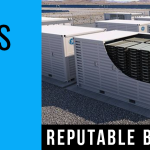 Only two U.S. states, California and Massachusetts, have set targets for energy storage deployments. Now New York City has joined them.
Only two U.S. states, California and Massachusetts, have set targets for energy storage deployments. Now New York City has joined them.
The city government unveiled a storage goal of 100 megawatt-hours by 2020 last week, along with an expanded solar target of 1,000 megawatts by 2030. Storage, with its capacity to integrate variable wind and solar power sources into the grid, is expected to play a critical role in meeting the city’s plans to cut greenhouse gases by 80 percent by 2050.
Storage experts told GTM that this is the first time a city has set such a target.
The city’s target is not a legally binding requirement like California’s. It’s more of an aspirational target with policies designed to make the process easier.
“With a city-based target, they are also directly responsible for building codes and siting regulations, deployment strategies and even local taxes — and the city can also take steps to adapt all these rules and regulations to accelerate deployment,” wrote Matt Roberts, executive director of the Energy Storage Association, in an email. “The city is able to marshal its forces toward this collective goal, and can more easily adjust the goal based on the observed value delivered in the future.”
The New York City target applies to the full spectrum of storage, including electrochemical and thermal technologies. City officials are targeting storage as a way to reduce demand charges, defer distribution system upgrades, pre-cool buildings and shift solar power consumption.
For all the potential use cases, energy storage is still a bit player in the city’s energy system. A major motivation for the storage target is to make permitting easier, said Daniel Zarrilli, senior director of climate policy and programs with the city.
Click Here to Read Full Article
read more
 Simple technique could see excess wind energy stored as heat and converted back to electricity using a steam turbine
Simple technique could see excess wind energy stored as heat and converted back to electricity using a steam turbine Electricity storage and energy efficiency product manufacturer, Powervault, has collaborated with Solar Power Portal to conduct a survey of the electricity storage market in the UK.
Electricity storage and energy efficiency product manufacturer, Powervault, has collaborated with Solar Power Portal to conduct a survey of the electricity storage market in the UK. Commercial energy storage firm Green Charge installed more than 6.3 MWh of
Commercial energy storage firm Green Charge installed more than 6.3 MWh of  Only a few weeks after
Only a few weeks after  Hawaiian Electric Co. has
Hawaiian Electric Co. has  September 27 (SeeNews) – New York City has set a new target of 1 GW of citywide solar capacity by 2030, mayor Bill de Blasio announced on Friday.
September 27 (SeeNews) – New York City has set a new target of 1 GW of citywide solar capacity by 2030, mayor Bill de Blasio announced on Friday.



